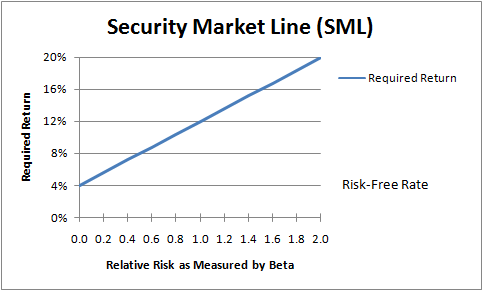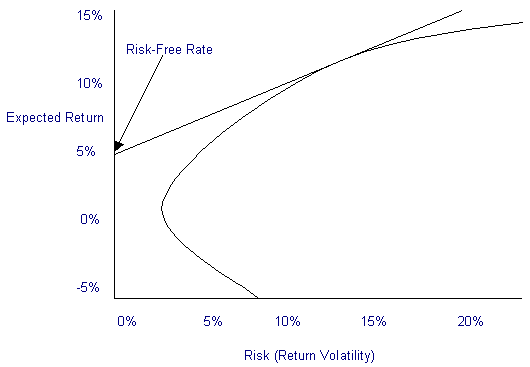Calculating the Riskfree Rate of Return From Market Frontier
Post on: 16 Март, 2015 No Comment

by Muhammad Humayun
Risk-free rate of return in an economy is the return offered on U.S. Treasury bills. These are considered risk-free based on the idea that the U.S. government has no risk on its debt obligations. The explicit rate can be directly inferred from the yield offered on these securities. Another way to calculate the risk-free rate of return is suggested by the Capital Asset Pricing Model (CAPM). The CAPM requires market return, market risk premium, required rate of return and beta as inputs for the estimation of the risk-free rate.
Market Return
The market return is the return on the chosen index, while the risk premium is the difference between the market return and the risk free rate. The beta measures the sensitivity of stock returns relative to the market and is higher than one if the stock is more volatile compared to the market.
Calculating Risk-free Return From Efficient Frontier
Step 1
Calculate the annual market return by subtracting the current value of the market index from the beginning value of the market index and divide by the beginning value of the market index.
Step 2
Estimate the beta of stock investments by dividing the covariance between stock and the market index with the market variance. Covariance measures how much two variables change with each other, while market variance measures the volatility of the stock market itself.
Step 3
Estimate the required rate of return as the opportunity cost of the next best alternative investment option available.
Step 4
Multiply stock invesment beta with the market return.
Step 5
Subtract required rate of return from value obtained in Step 4.
Step 6
Subtract beta from one.
Step 7

Divide Step 5 by Step 6 to obtain the estimate for the risk-free rate.
Capital Asset Pricing Model
The CAPM model assumes that the market returns are positive and greater than the risk-free rate. This assumption can often be unrealistic and distort the results. However, this remains to be the most popular method for calculation if the risk-free rate based on its predictive power.
The required rate of return may vary widely from individual to individual and may result in conflicting results when compared to the U.S. Treasury bill rates. This difference is not explained by the CAPM model, and the model is not perfect. The best way is to use the risk-free rate offered by the U.S. Treasury bills but if the question requires the use of the CAPM model, then the above methodology must be used for calculation of the risk-free rate.
Things to Remember
To better understand the formula used for the above calculation just algebraically manipulate the CAPM equation where, required rate of return = risk-free rate + beta (market return – risk free rate).
If values for covariance or variance of the market are not provided in the question, investors do not need to perform extensive calculations to estimate them; instead they can obtain the value of beta from Valueline.com and other relevant research companies.
Sources
Financial Economics, Jones, C; 2008
Fundamentals of financial management, Horne, J. and Wachowicz, J; 2008














